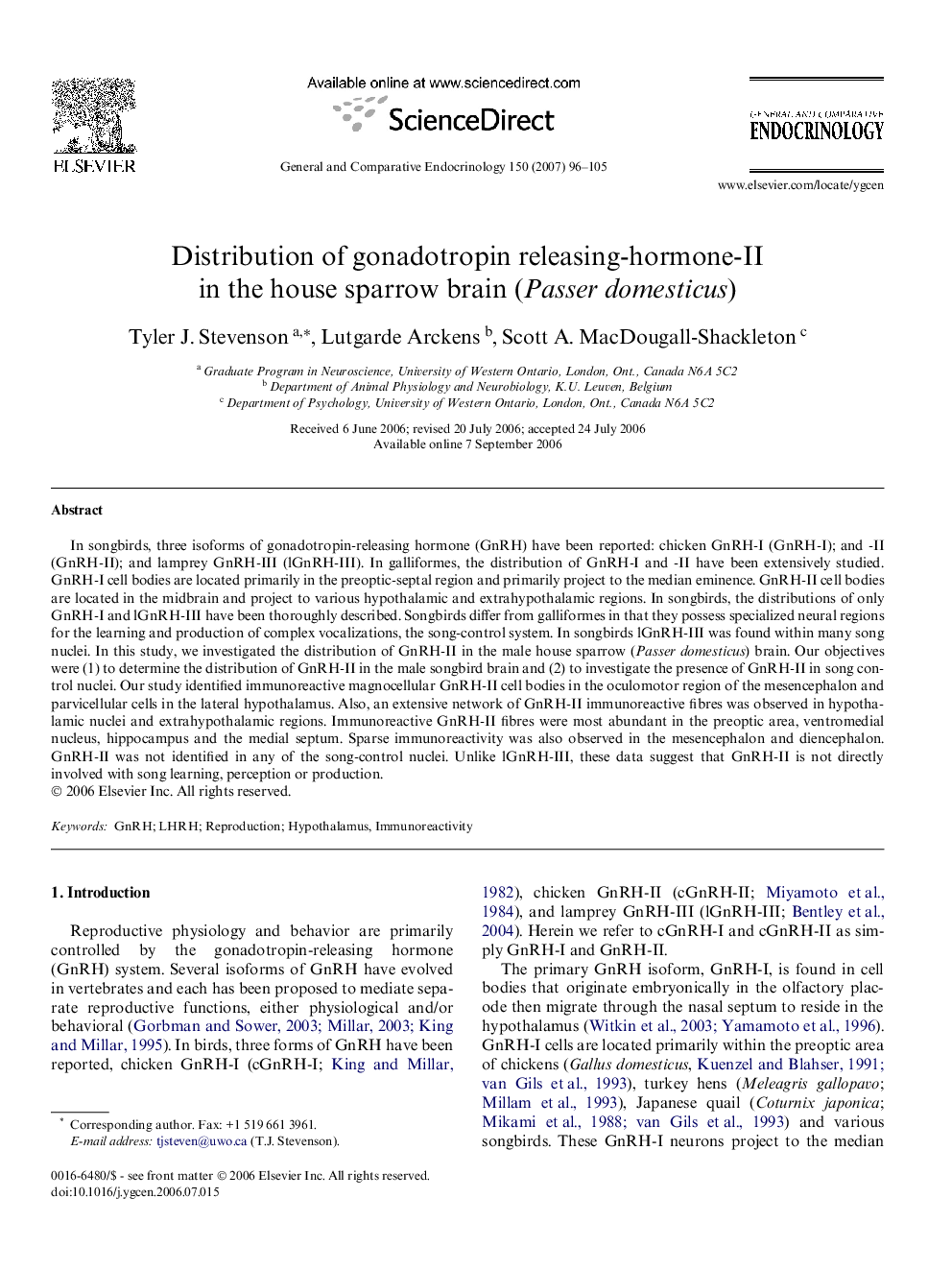| Article ID | Journal | Published Year | Pages | File Type |
|---|---|---|---|---|
| 2802197 | General and Comparative Endocrinology | 2007 | 10 Pages |
Abstract
In songbirds, three isoforms of gonadotropin-releasing hormone (GnRH) have been reported: chicken GnRH-I (GnRH-I); and -II (GnRH-II); and lamprey GnRH-III (lGnRH-III). In galliformes, the distribution of GnRH-I and -II have been extensively studied. GnRH-I cell bodies are located primarily in the preoptic-septal region and primarily project to the median eminence. GnRH-II cell bodies are located in the midbrain and project to various hypothalamic and extrahypothalamic regions. In songbirds, the distributions of only GnRH-I and lGnRH-III have been thoroughly described. Songbirds differ from galliformes in that they possess specialized neural regions for the learning and production of complex vocalizations, the song-control system. In songbirds lGnRH-III was found within many song nuclei. In this study, we investigated the distribution of GnRH-II in the male house sparrow (Passer domesticus) brain. Our objectives were (1) to determine the distribution of GnRH-II in the male songbird brain and (2) to investigate the presence of GnRH-II in song control nuclei. Our study identified immunoreactive magnocellular GnRH-II cell bodies in the oculomotor region of the mesencephalon and parvicellular cells in the lateral hypothalamus. Also, an extensive network of GnRH-II immunoreactive fibres was observed in hypothalamic nuclei and extrahypothalamic regions. Immunoreactive GnRH-II fibres were most abundant in the preoptic area, ventromedial nucleus, hippocampus and the medial septum. Sparse immunoreactivity was also observed in the mesencephalon and diencephalon. GnRH-II was not identified in any of the song-control nuclei. Unlike lGnRH-III, these data suggest that GnRH-II is not directly involved with song learning, perception or production.
Related Topics
Life Sciences
Biochemistry, Genetics and Molecular Biology
Endocrinology
Authors
Tyler J. Stevenson, Lutgarde Arckens, Scott A. MacDougall-Shackleton,
